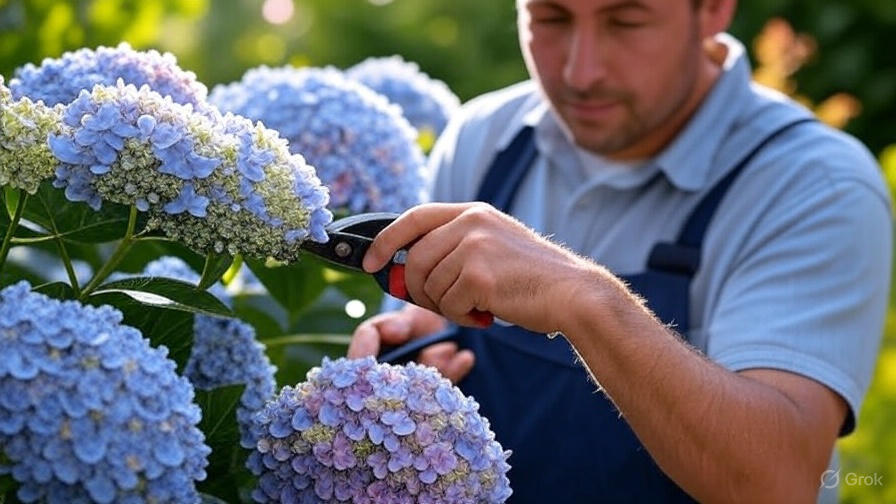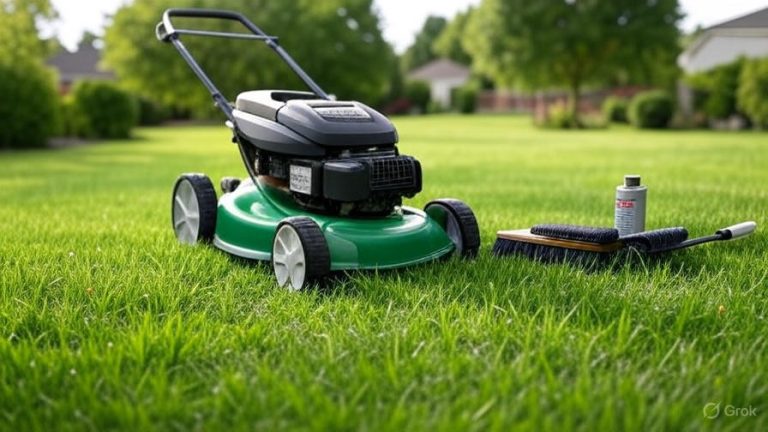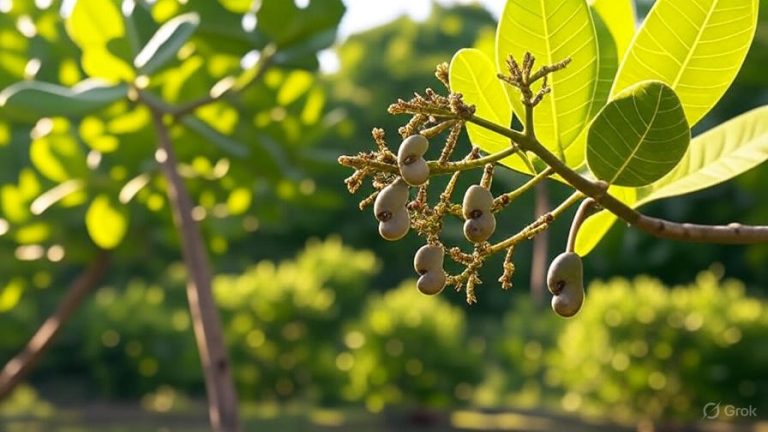How & When to Prune Hydrangeas?
Hydrangeas bring spectacular color and elegance to gardens worldwide, but many gardeners struggle with proper pruning techniques. These beloved flowering shrubs require specific care to maintain their stunning blooms year after year. The key to successful hydrangea pruning lies in timing, technique, and knowing your specific variety.
Most gardeners make critical mistakes when pruning hydrangeas, often cutting at the wrong time or using incorrect methods. This results in reduced blooming, stunted growth, or even damaged plants. With the right knowledge and approach, you can master hydrangea pruning to create healthier, more vibrant shrubs that produce abundant flowers.
Why Proper Hydrangea Pruning Matters
Pruning hydrangeas serves multiple essential purposes beyond simple maintenance. Regular pruning encourages new growth, removes dead or diseased wood, and shapes the plant for optimal appearance. Well-pruned hydrangeas also produce larger, more colorful flower clusters.
Different hydrangea varieties bloom on either old wood or new wood, making timing crucial for successful pruning. Old wood refers to stems that grew during the previous season, while new wood describes current-year growth. This distinction determines when and how you should prune each type.
Neglecting proper pruning leads to overcrowded branches, reduced air circulation, and increased susceptibility to diseases. Overgrown hydrangeas also tend to produce smaller flowers and may become structurally weak over time.
The Main Types of Hydrangeas and Their Pruning Needs
Bigleaf Hydrangeas (Hydrangea macrophylla)
Bigleaf hydrangeas, also known as French hydrangeas or mophead hydrangeas, bloom primarily on old wood. These popular garden varieties include both mophead and lacecap forms. Their flower buds develop during late summer and fall, remaining dormant through winter before blooming the following spring.
Pruning bigleaf hydrangeas requires careful timing since cutting too late in the season removes next year’s flower buds. The best pruning window occurs immediately after flowering, typically in mid to late summer. This allows the plant sufficient time to develop new buds for the following season.
Some newer bigleaf varieties, called reblooming or remontant hydrangeas, can flower on both old and new wood. These cultivars offer more flexibility in pruning schedules but still benefit from post-bloom pruning for maximum flower production.
Panicle Hydrangeas (Hydrangea paniculata)
Panicle hydrangeas bloom on new wood, making them much more forgiving for pruning mistakes. These hardy shrubs produce cone-shaped flower clusters and can tolerate more aggressive pruning than their bigleaf cousins. Popular varieties include ‘Limelight,’ ‘Little Lime,’ and ‘Phantom.’
Since panicle hydrangeas bloom on current-year growth, you can prune them during late winter or early spring before new growth begins. This timing allows the plant to direct all its energy into producing new flowering shoots for the upcoming season.
These hydrangeas also respond well to renewal pruning, where you can cut the entire plant back to 12-18 inches from the ground to rejuvenate old or overgrown specimens.
Smooth Hydrangeas (Hydrangea arborescens)
Smooth hydrangeas, including the popular ‘Annabelle’ variety, bloom exclusively on new wood. These native North American shrubs produce large, rounded flower clusters and can handle significant pruning without affecting bloom production.
Like panicle hydrangeas, smooth varieties benefit from late winter or early spring pruning. They can even be cut back to ground level each year if desired, though this isn’t necessary for healthy plants.
Oakleaf Hydrangeas (Hydrangea quercifolia)
Oakleaf hydrangeas bloom on old wood and require minimal pruning. These distinctive shrubs feature oak-shaped leaves and cone-shaped flower clusters. They develop their flower buds during the previous growing season.
Prune oakleaf hydrangeas immediately after flowering, but only remove spent blooms and any dead or damaged wood. Avoid heavy pruning since these plants have a naturally attractive form that doesn’t require significant shaping.
Climbing Hydrangeas (Hydrangea anomala petiolaris)
Climbing hydrangeas bloom on old wood and need minimal pruning once established. These vigorous vines can take several years to begin flowering but eventually produce stunning displays of white flowers.
Prune climbing hydrangeas only to control size or remove dead wood. Perform any necessary pruning immediately after flowering to avoid removing next year’s buds.
When to Prune Hydrangeas: Seasonal Timing Guide
Spring Pruning (March-May)
Spring offers the ideal pruning window for new wood bloomers like panicle and smooth hydrangeas. Begin pruning after the last frost date but before new growth becomes active. This timing allows you to see the plant’s structure clearly while avoiding damage to emerging shoots.
Remove any winter-killed branches first, cutting back to healthy wood. Look for brown or black stems that feel hollow or brittle. Healthy wood appears green or tan with solid, firm stems.
For panicle hydrangeas, remove weak or crossing branches and cut back remaining stems by one-third to one-half. This encourages strong new growth and larger flower clusters.
Smooth hydrangeas can be cut back more aggressively, even to ground level if desired. However, moderate pruning to 12-18 inches often produces better results with stronger stems that don’t require staking.
Summer Pruning (June-August)
Summer pruning works best for old wood bloomers like bigleaf and oakleaf hydrangeas. Wait until flowers begin to fade, typically in mid to late summer, before making any cuts.
Remove spent flower heads by cutting just above the first set of healthy leaves below the bloom. This practice, called deadheading, keeps the plant looking tidy and may encourage additional blooms on reblooming varieties.
Avoid heavy pruning during summer since plants are actively growing and may struggle to recover from significant cuts. Focus on light maintenance and shaping rather than major structural changes.
Fall Pruning (September-November)
Fall pruning should be approached with caution for most hydrangea varieties. While you might feel tempted to clean up the garden before winter, many hydrangeas benefit from leaving old flower heads intact through the cold season.
Dried flower heads provide winter interest and help protect the plant from extreme cold. They also serve as markers for where flower buds are located, helping you avoid accidental removal during spring cleanup.
If you must prune in fall, limit yourself to removing obviously dead or damaged wood. Save major pruning for the appropriate season based on your hydrangea type.
Winter Pruning (December-February)
Winter pruning works well for new wood bloomers in mild climates but should be avoided in areas with harsh winters. Cold temperatures can damage fresh cuts and stress the plant.
In warmer regions, you can prune panicle and smooth hydrangeas during late winter before sap begins to flow. This timing allows you to see the plant’s structure clearly and make precise cuts.
Avoid pruning old wood bloomers during winter since this removes flower buds and eliminates next year’s blooms.

Essential Tools and Equipment for Hydrangea Pruning
Basic Pruning Tools
Sharp, clean pruning shears form the foundation of successful hydrangea pruning. Bypass pruners work better than anvil-style cutters since they make cleaner cuts that heal faster. Choose pruners that feel comfortable in your hand and can handle stems up to 3/4 inch in diameter.
Loppers extend your cutting capacity for thicker branches up to 1.5 inches. Long handles provide better leverage and reach for taller shrubs. Look for lightweight models with sharp, replaceable blades.
A pruning saw becomes necessary for removing large, old stems or performing renewal pruning. Folding saws are convenient for storage and transport, while larger fixed-blade saws handle heavy-duty work more efficiently.
Cleaning and Maintenance
Clean tools prevent disease transmission between plants and cuts. Wipe blades with rubbing alcohol or a 10% bleach solution between plants, especially when dealing with diseased wood.
Sharp tools make cleaner cuts that heal faster and reduce plant stress. Dull blades crush stems and create ragged wounds that invite disease. Sharpen or replace blades regularly to maintain cutting efficiency.
Oil moving parts and store tools in a dry location to prevent rust and corrosion. Well-maintained tools last longer and perform better throughout the pruning season.
Step-by-Step Pruning Techniques
Assessing Your Hydrangea Before Pruning
Begin by examining your hydrangea’s overall health and structure. Look for dead, diseased, or damaged wood that needs removal regardless of variety or timing. These branches appear brown, black, or hollow and should be your first priority.
Identify crossing or rubbing branches that can cause wounds and provide entry points for diseases. Remove the weaker of two crossing branches to maintain good air circulation and prevent future problems.
Evaluate the plant’s size and shape to determine how much pruning is necessary. Overgrown hydrangeas may need more aggressive pruning spread over several seasons rather than one drastic cutting.
Making Proper Cuts
Make all pruning cuts just above a healthy bud or leaf node at a slight angle. The cut should slope away from the bud to encourage water runoff and prevent rot. Avoid cutting too close to the bud, which can damage it, or too far away, which leaves a stub that can die back.
Cut back to a main stem or branch junction when removing entire branches. This prevents leaving stubs that can become entry points for diseases and pests.
For spent flowers, cut just above the first set of strong leaves below the bloom. This encourages new growth while maintaining the plant’s natural shape.
Deadheading Techniques
Deadheading involves removing spent flowers to keep the plant looking tidy and potentially encourage additional blooms. For most hydrangeas, cut the flower stem back to the first set of healthy leaves below the bloom.
Some gardeners prefer to leave spent flowers on the plant through winter for protection and interest. This approach works well in colder climates where the dried blooms provide insulation for flower buds.
Reblooming hydrangeas may produce additional flowers if deadheaded promptly after the first flush of blooms fades. Remove spent flowers regularly throughout the growing season to encourage continuous blooming.
Renewal Pruning for Overgrown Plants
Severely overgrown hydrangeas may require renewal pruning to restore their health and appearance. This drastic technique involves cutting the entire plant back to 12-18 inches from the ground.
Only attempt renewal pruning on new wood bloomers like panicle and smooth hydrangeas. Old wood bloomers will not flower for several years if subjected to this treatment.
Perform renewal pruning during late winter or early spring before new growth begins. The plant will produce vigorous new shoots that create a more compact, manageable shrub.
Common Pruning Mistakes to Avoid
Timing Errors
The most common mistake involves pruning old wood bloomers too late in the season. Cutting bigleaf hydrangeas in spring removes flower buds and eliminates blooms for the entire growing season.
Conversely, pruning new wood bloomers too early in fall can stimulate new growth that won’t have time to harden off before winter. This tender growth is susceptible to cold damage and can weaken the plant.
Over-Pruning
Many gardeners prune hydrangeas too heavily, thinking it will improve flowering. However, excessive pruning can stress the plant and reduce bloom production. Most hydrangeas need only light annual pruning to maintain their health and appearance.
Removing more than one-third of the plant’s growth in a single season can shock the hydrangea and slow its recovery. Spread major pruning over several seasons to minimize stress.
Improper Cut Placement
Making cuts in the wrong location can damage the plant and reduce flowering. Always cut just above a healthy bud or leaf node, not in random locations along the stem.
Leaving long stubs when removing branches creates dead wood that can harbor diseases and pests. Cut back to a main stem or branch junction for the healthiest results.
Neglecting Tool Maintenance
Using dull or dirty tools increases the risk of disease transmission and creates ragged cuts that heal poorly. Clean and sharpen pruning tools regularly to maintain their effectiveness.
Contaminated tools can spread diseases between plants, particularly bacterial and fungal infections. Disinfect tools between plants using rubbing alcohol or bleach solution.
Seasonal Hydrangea Care Beyond Pruning
Spring Care
Spring marks the beginning of active growth for most hydrangeas. Apply a balanced fertilizer around the base of the plant, following package directions for application rates. Avoid high-nitrogen fertilizers that can promote excessive leaf growth at the expense of flowers.
Mulch around the base of the plant with organic material like shredded bark or compost. Mulch helps retain moisture, suppress weeds, and regulate soil temperature. Keep mulch several inches away from the stem to prevent rot and pest problems.
Begin regular watering as temperatures warm and new growth appears. Hydrangeas need consistent moisture throughout the growing season but don’t tolerate waterlogged soil.
Summer Maintenance
Summer requires consistent watering to keep hydrangeas healthy during hot weather. Water deeply but less frequently to encourage deep root growth. Early morning watering reduces disease risk and gives plants time to dry before evening.
Monitor for common pests like aphids, spider mites, and scale insects. These pests can weaken plants and reduce flowering. Use integrated pest management approaches, starting with least-toxic options.
Deadhead spent flowers regularly to keep plants looking tidy and potentially encourage additional blooms on reblooming varieties. Remove any diseased or damaged foliage promptly to prevent spread.
Fall Preparation
Fall preparation helps hydrangeas survive winter and bloom successfully the following year. Reduce watering as temperatures cool and growth slows. Overwatering during fall can make plants more susceptible to winter damage.
Leave spent flower heads on the plant through winter in colder climates. These dried blooms provide protection for flower buds and add winter interest to the garden.
Apply a layer of mulch around the base of the plant before hard freezes arrive. This insulates the root system and helps prevent frost heaving in cold climates.
Winter Protection
Winter protection becomes crucial for marginally hardy hydrangeas and those in exposed locations. Wrap tender varieties in burlap or cover with evergreen boughs to protect from drying winds and extreme cold.
Avoid using plastic coverings that can trap moisture and cause rot. Breathable materials like burlap allow air circulation while providing protection from wind and sun.
Remove snow loads from branches to prevent breakage, but avoid disturbing the plant unnecessarily during winter dormancy.
Troubleshooting Common Hydrangea Problems
Poor Flowering
Poor flowering often results from improper pruning timing or technique. Old wood bloomers pruned too late lose their flower buds, while new wood bloomers may need more aggressive pruning to encourage flowering shoots.
Insufficient sunlight can also reduce flowering. Most hydrangeas need at least four hours of direct sunlight daily to bloom well. Consider relocating plants or pruning surrounding vegetation to increase light exposure.
Nutrient imbalances, particularly excess nitrogen, can promote leaf growth at the expense of flowers. Use balanced fertilizers and avoid over-fertilizing, especially with high-nitrogen products.
Weak or Floppy Stems
Weak stems often result from too much shade, over-fertilization, or inadequate pruning. Plants grown in deep shade develop weak, elongated stems that can’t support heavy flower clusters.
Over-fertilization, particularly with nitrogen, creates soft, weak growth that’s prone to breakage. Reduce fertilizer applications and focus on balanced nutrition rather than heavy feeding.
Inadequate pruning allows old, weak stems to persist and compete with new growth. Remove oldest stems annually to encourage strong new shoots.
Disease Issues
Common diseases include powdery mildew, leaf spot, and root rot. Good air circulation, proper spacing, and avoiding overhead watering help prevent many fungal diseases.
Prune out diseased wood immediately and dispose of it away from the garden. Don’t compost diseased material since many pathogens can survive the composting process.
Disinfect pruning tools between plants when dealing with diseased material. Use rubbing alcohol or a 10% bleach solution to prevent disease spread.
Pest Problems
Aphids, spider mites, and scale insects commonly attack hydrangeas. These pests weaken plants and can reduce flowering. Regular inspection helps catch problems early when they’re easier to control.
Use integrated pest management approaches, starting with least-toxic options like insecticidal soap or horticultural oil. These products are effective against many common pests while being safer for beneficial insects.
Encourage beneficial insects by planting diverse flowering plants nearby and avoiding broad-spectrum pesticides. Natural predators help control pest populations without chemical interventions.
Advanced Pruning Techniques for Specific Goals
Creating Tree-Form Hydrangeas
Some hydrangea varieties can be trained into tree form through selective pruning. This technique works best with panicle hydrangeas that have naturally strong stems and upright growth habits.
Start with a young plant and select the strongest, most vertical stem as the main trunk. Remove all other stems at ground level and any side branches on the lower half of the trunk.
Gradually raise the canopy over several years by removing lower branches while maintaining the desired height and shape. This creates an attractive specimen plant suitable for small gardens or containers.
Espalier Training
Climbing hydrangeas can be trained in espalier patterns against walls or fences. This technique requires patience and regular pruning to maintain the desired form.
Install a sturdy support system before planting and train main branches along horizontal wires or supports. Prune side shoots back to two or three buds annually to maintain the pattern.
This technique works best in locations with adequate support and protection from strong winds that can damage the trained branches.
Hedge Pruning
Some hydrangea varieties work well as informal hedges when pruned appropriately. Panicle hydrangeas are particularly suitable for this purpose due to their uniform growth habit and tolerance for regular pruning.
Maintain hedge shape through annual pruning during the appropriate season for your variety. Trim lightly and frequently rather than making heavy cuts that can stress the plants.
Consider the mature size of your chosen variety when planning hedge spacing. Proper spacing reduces the need for aggressive pruning and creates a more natural appearance.
Conclusion: Master the Art of Hydrangea Pruning
Successful hydrangea pruning requires understanding your specific variety, timing cuts appropriately, and using proper techniques. Old wood bloomers need post-bloom pruning, while new wood bloomers benefit from late winter or early spring cutting.
Regular maintenance pruning keeps hydrangeas healthy and productive without requiring drastic measures. Remove dead, diseased, or damaged wood annually, and shape the plant lightly to maintain its natural form.
Remember that hydrangeas are forgiving plants that can recover from pruning mistakes given time and proper care. Start conservatively and increase your pruning confidence as you gain experience with your specific varieties.
With proper pruning techniques, your hydrangeas will reward you with years of spectacular blooms and healthy growth. Take time to observe your plants throughout the seasons and adjust your pruning approach based on their response and your garden’s specific conditions.
The key to long-term success lies in consistent care, appropriate timing, and respecting each variety’s unique blooming habits. Master these fundamentals, and your hydrangeas will become the crown jewels of your garden landscape.







